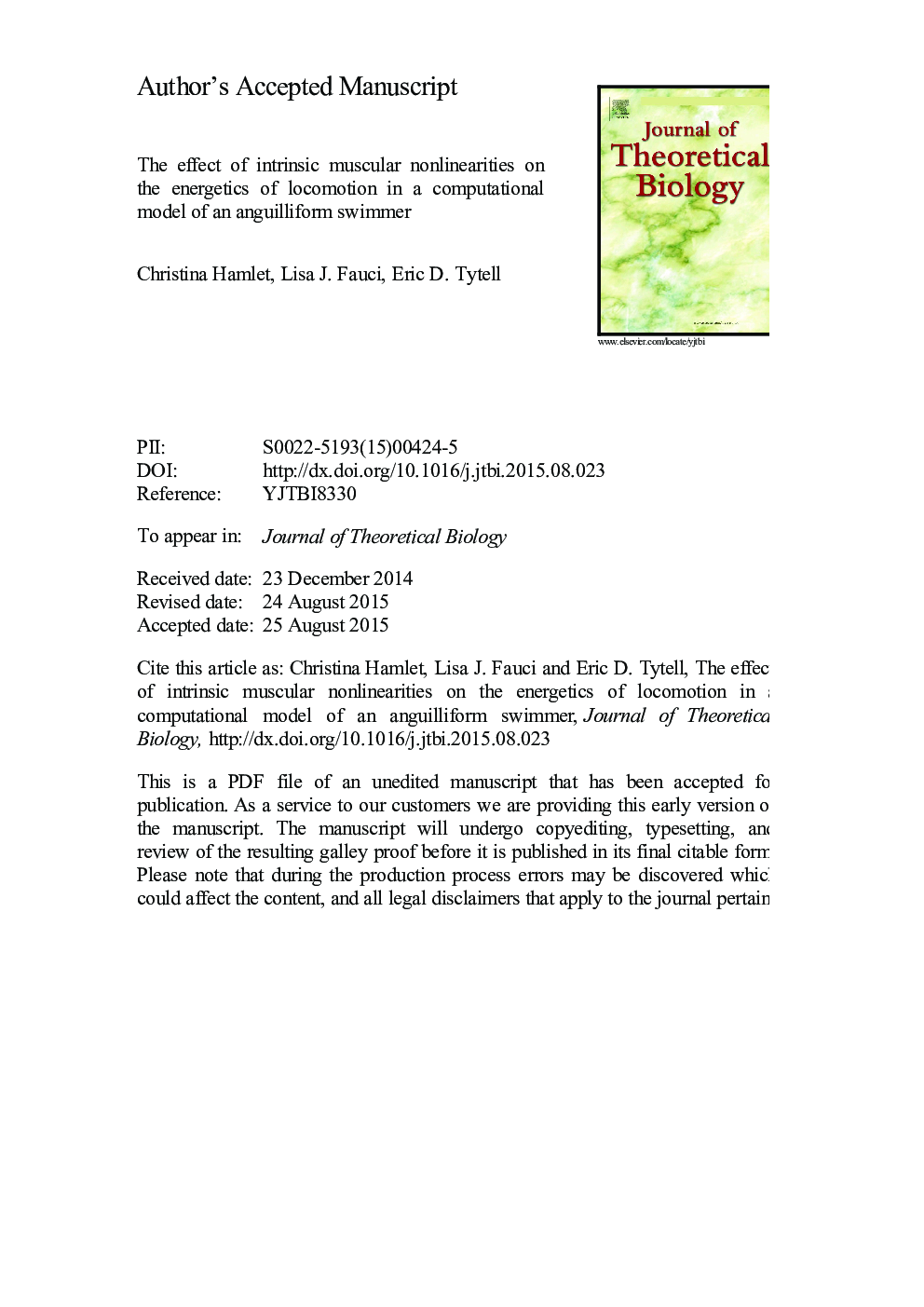| Article ID | Journal | Published Year | Pages | File Type |
|---|---|---|---|---|
| 6369489 | Journal of Theoretical Biology | 2015 | 72 Pages |
Abstract
Animals move through their environments using muscles to produce force. When an animal׳s nervous system activates a muscle, the muscle produces different amounts of force depending on its length, its shortening velocity, and its time history of force production. These muscle forces interact with forces from passive tissue properties and forces from the external environment. Using an integrative computational model that couples an elastic, actuated model of an anguilliform, lamprey-like swimmer with a surrounding Navier-Stokes fluid, we study the effects of this coupling between the muscle force and the body motion. Swimmers with different forms of this coupling can achieve similar motions, but use different amounts of energy. The velocity dependence is the most important property of the ones we considered for reducing energy costs and helping us to stabilize oscillations. These effects are strongly influenced by how rapidly the muscle deactivates; if force decays too slowly, muscles on opposite sides of the body end up fighting each other, increasing energy cost. Work-dependent deactivation, an effect that causes a muscle to deactivate more rapidly if it has recently produced mechanical work, works together with the velocity dependence to reduce the energy cost of swimming.
Related Topics
Life Sciences
Agricultural and Biological Sciences
Agricultural and Biological Sciences (General)
Authors
Christina Hamlet, Lisa J. Fauci, Eric D. Tytell,
